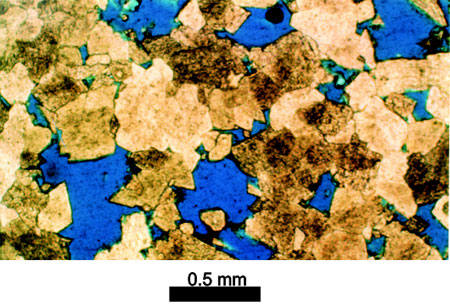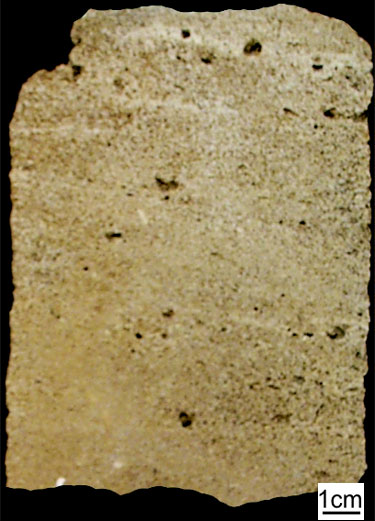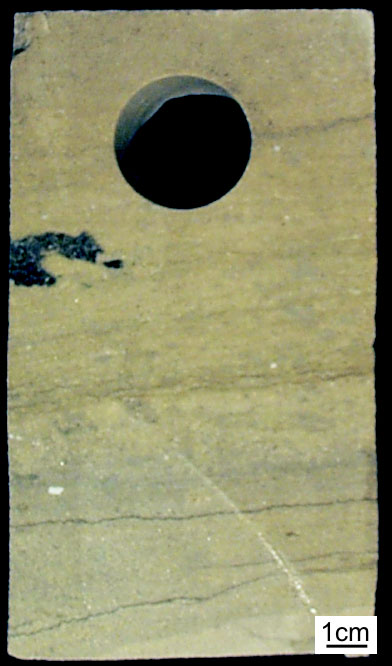Facies (4) Packstone-grainstone (Reservoir)

Packstone, intercrystalline porosity,#2 Tobias 3329’, plane polarized light, blue epoxy.
|
Tobias #2 3329.4' |
Ord #1 1424’ |
Typically massive, horizontally bedded or crossbedded and typically interbedded with ooid packstone-grainstone and wackestone-packstone facies. Grains include intraclasts, skeletal and algal fragments, ooids, peloids, and lumps. This facies indicates higher energy deposition in subtidal to pertidal settings (fenestrae and keystone vugs). Locally packstone-grainstone is tightly cemented by euhedral dolomite (< to 0.5 mm). However, this facies typically has good intercrystalline porosity. In some rocks the original cement between grains has been leached creating interparticle porosity that is open or filled with chert. This chert has a "chalky" appearance and is porous but exhibits low permeability. This facies typically has good intercrystalline porosity and high permeability.
|
|
e-mail : webadmin@kgs.ku.edu
Last updated June 2003
http://www.kgs.ku.edu/PRS/publication/2003/ofr2003-32/P3-04-4.html


